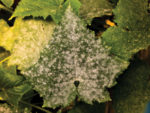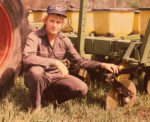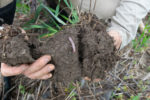Advertise Follow Us
Laura Barrera
Laura Barrera is the former managing editor of No-Till Farmer and Conservation Tillage Guide magazines. Prior to joining No-Till Farmer, she served as an assistant editor for a greenhouse publication. Barrera holds a B.A. in magazine journalism from Ball State University.
ARTICLES
Reducing Fertilizer, Boosting Yields with Sap Analysis
Prioritizing Soil Health to Protect Profitability for Generations to Come
Reminiscing on No-Till’s Revolution
Deploy Cover Crops to Drop Your Herbicide Use
How No-Tillers Can Combat the Evolution of Herbicide Resistance
No-Tillers Continuing Their Cover Crop Investment
5 On-Farm Studies Help No-Tiller Measure Profitability and Calculate ROI
7 Strategies for Reducing Slug and Vole Problems
Top Articles
Current Issue
No-Till Farmer
Get full access NOW to the most comprehensive, powerful and easy-to-use online resource for no-tillage practices. Just one good idea will pay for your subscription hundreds of times over.
Soil Health Principle 4: Continual Living Plant
Regenerating Your Profits: No-Till, Covers & Livestock
Good or Bad, We’re in for Some Interesting Times for Conservation Ag
Must Read Free Eguides
Download these helpful knowledge building tools
- How Beneficial Insects, Pollinators Can Boost No-Till Resilience
- How No-Till Improves Your Land Value
- 5 Pillars for No-Till Farming Effectively, Efficiently
- Making the Precision Basics Even Better with Implement Guidance
Videos
What to Expect at 2025 National Strip-Tillage Conference
The 2025 National Strip-Tillage Conference takes place July 31-August 1 in Iowa City. In this video, past attendees and speakers share why they keep coming back! Head to StripTillConference.com to download the program and register for the 2025 National Strip-Tillage Conference!
















